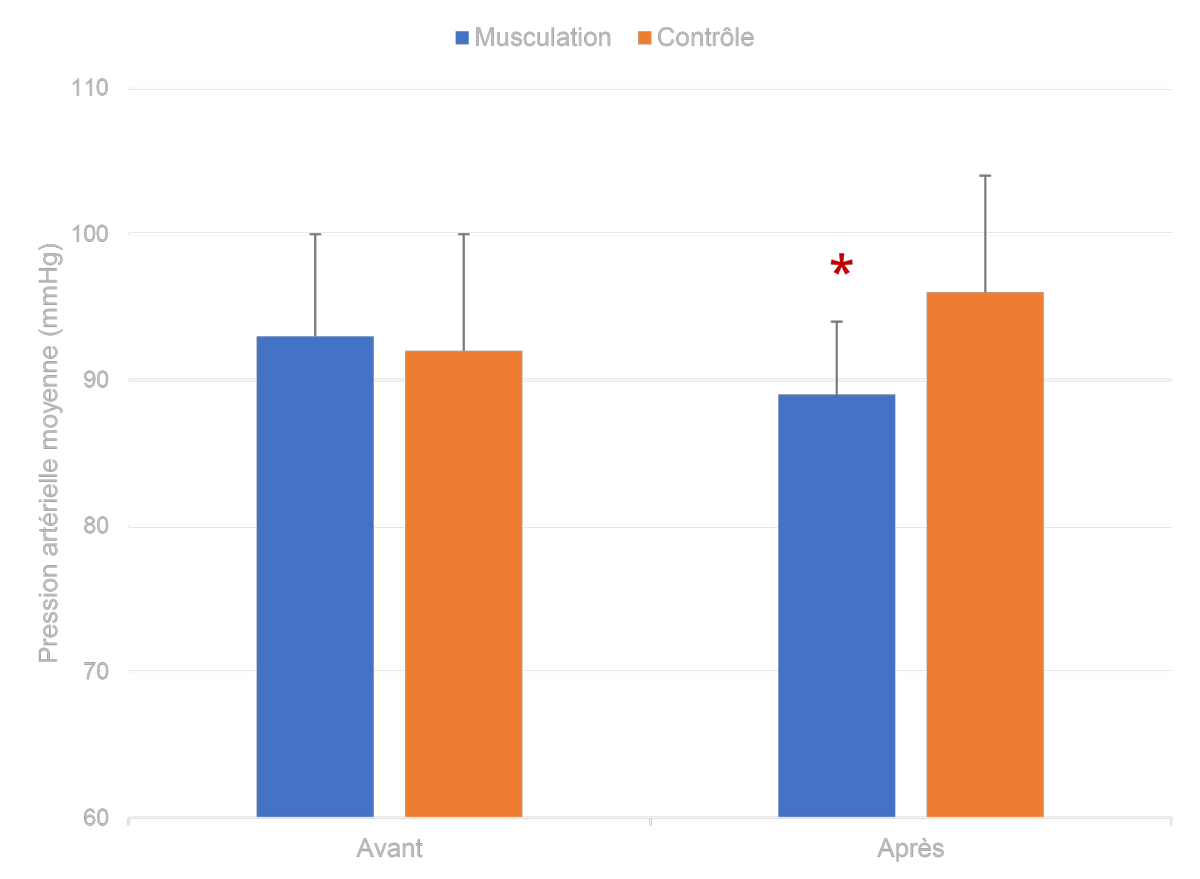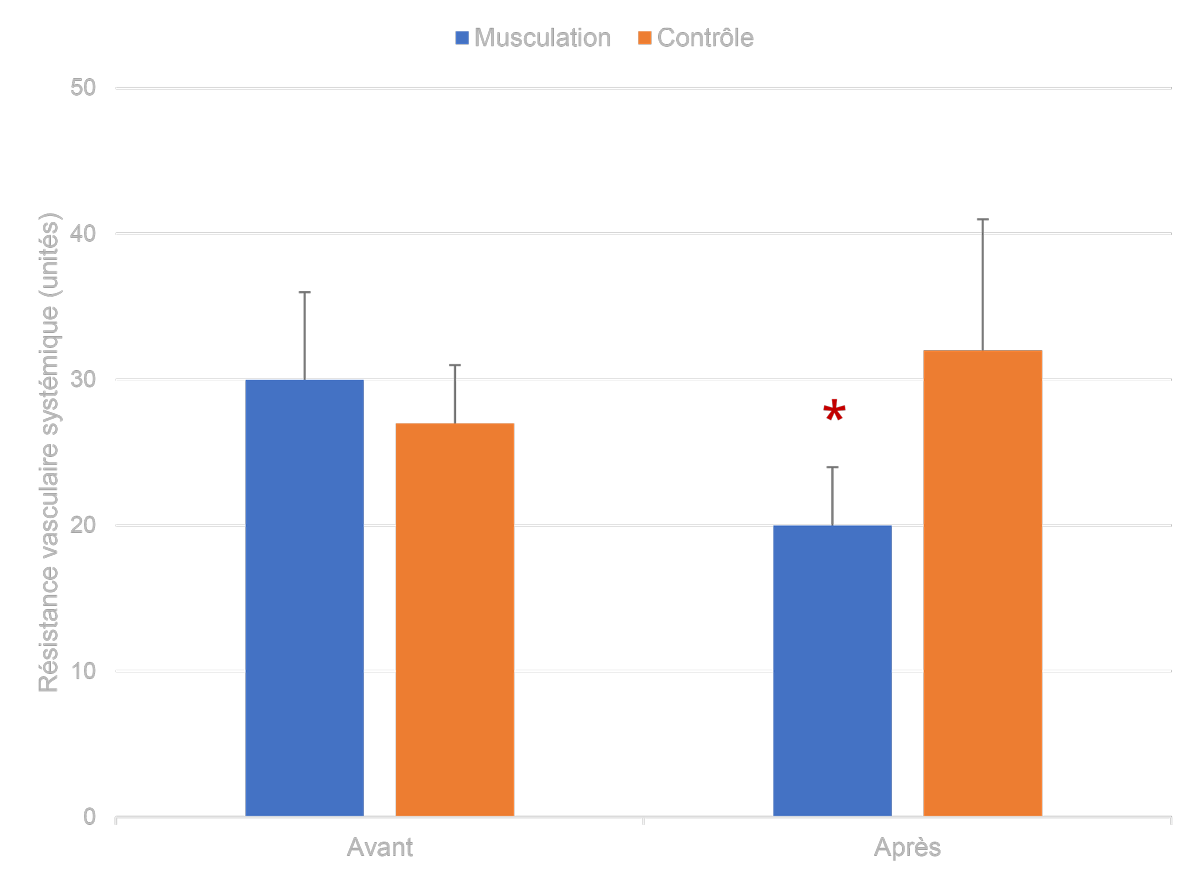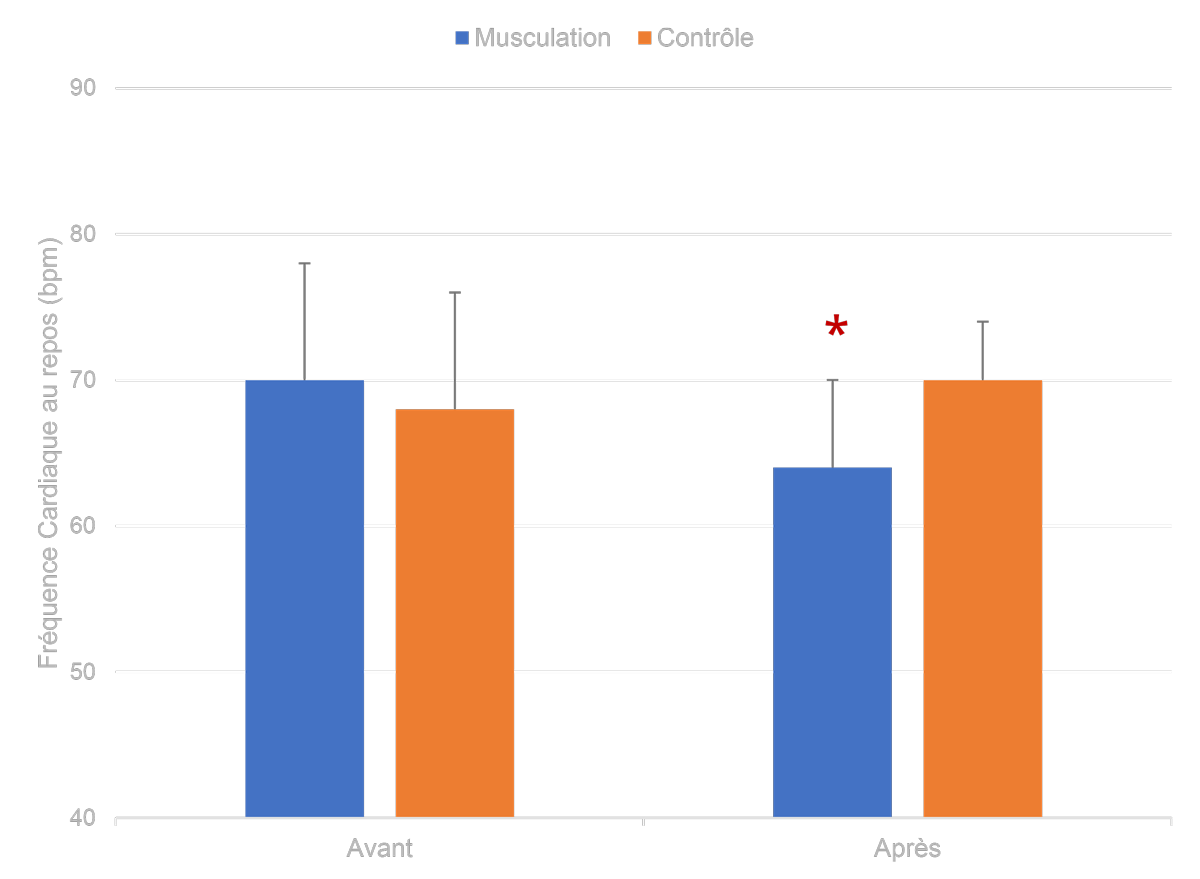Musculation et hypertension : Améliorer sa santé cardiovasculaire

Selon l’Organisation mondiale de la santé (OMS), les maladies cardiaques causent environ 17 millions de morts par an, soit presque un tiers de la totalité des morts. L’hypertension artérielle serait responsable de près de la moitié de ces morts, soit 13% des décès dans le monde, et plus de 8 millions de morts par an. L’OMS estime que d’ici 2025, 1,56 milliard d’individus seront atteints d’hypertension artérielle.L’augmentation de la pression sanguine est un important facteur de risque pour les maladies cardiovasculaires (accidents vasculaires cérébraux et maladie coronarienne, notamment). La pression artérielle est quantifiée par deux valeurs, les pressions systolique (pression maximale dans la circulation systémique lorsque le sang est éjecté par le cœur) et diastolique (pression minimale dans la circulation systémique lorsque le cœur se “relâche”). Pour la plupart des adultes, une tension artérielle normale est de 100-130/60-80 mmHg. Mais lorsque ces valeurs dépassent au repos 140/90 mmHg de manière quotidienne, on parle d’hypertension. De nombreux facteurs influencent la pression artérielle systolique et diastolique, notamment le volume sanguin, la compliance des parois artérielles, et les résistances périphériques. Si certains facteurs génétiques et certaines maladies peuvent entraîner une hypertension, la cause principale est souvent comportementale (alimentation, consommation d’alcool, tabagisme, sédentarité, etc.).
Outre les traitements médicamenteux, l’activité physique, et plus précisément l’endurance cardio-vasculaire est recommandée pour la prévention, le traitement et le contrôle de l’hypertension artérielle. Elle permet d’améliorer différentes fonctions cardiovasculaires (dont la fonction endothéliale) qui ont pour conséquence de diminuer la tension artérielle, comme nous l’expliquions dans un article précédent sur le HIIT et l’hypertension. Aujourd’hui, l’OMS estime qu’environ 50% des femmes de 65 à 75 ans souffrent d’hypertension. Cette forte prévalence dans cette population est en partie due à une altération dans le fonctionnement du système nerveux autonome (équilibre entre l’excitateur, le sympathique et le relaxant, le parasympathique). Chez les personnes souffrant d’hypertension, l’activité du système nerveux sympathique est plus élevée, et celle du parasympathique est plus réduite. Et chez les femmes âgées de plus de 60 ans, cet état est souvent associé avec une résistance vasculaire systémique plus élevée, c’est-à-dire que le sang rencontre plus de résistance pour s’écouler dans le corps, ce qui a pour conséquence d’augmenter la tension artérielle. Dans ce cas, la musculation peut-elle aider pour améliorer l’état de santé ?
L’étude réalisée
Pour répondre à cette question, une équipe de chercheurs brésiliens a étudié l’effet d’un programme de musculation à courts termes sur la santé cardiovasculaire de femmes âgées de plus de 60 ans et présentant une hypertension artérielle chronique. Pour cela, les chercheurs ont recruté 25 femmes sédentaires (toutes suivant un traitement médicamenteux d’un ou de deux médicaments contre l’hypertension). L’étude a duré 13 semaines. Les participantes ont été réparties en deux groupes, un groupe expérimental (n = 13) et un groupe contrôle (n = 12). La première semaine a servi de période de familiarisation avec les exercices de musculation, la seconde et la treizième semaine ont permis d’évaluer les participantes avant et après, et le protocole expérimental d’entraînement a pris place de la 3ème à la 12ème semaine. A la fin de l’étude, le groupe contrôle a pu prendre part au protocole expérimental.
Le programme de musculation a duré 10 semaines, à raison de 2 séances supervisées par semaine lors des 5 premières semaines et de 3 séances supervisées lors des 5 dernières semaines. Chaque séance consistait en 9 exercices réalisés dans l’ordre suivant : Presse à cuisses, tirage horizontal assis, crunchs, leg curl, développé couché, back extension, push press, extensions mollet debout et tirage vertical poulie haute (Note Sci-Sport : Allez savoir pourquoi cet ordre étrange et sans aucune logique…). Au cours des 10 semaines du programme, le nombre de séries est passé de 1 à 3 et le nombre de répétitions de 9-11 à 13-15 tout en diminuant progressivement le repos entre les séries de 120s à 60s.
En ce qui concerne les évaluations, les chercheurs ont mesuré, au repos, la pression artérielle moyenne, la résistance vasculaire systémique (ratio entre la pression artérielle moyenne et le flux sanguin dans l’avant-bras), la fréquence cardiaque et la fonction cardiaque autonome via la variabilité de la fréquence cardiaque. En plus de cela, les participantes ont été soumises à des tests de 1RM au développé couché et à la presse à cuisse. Les tests de 1RM ont également permis d’étalonner l’échelle RPE (Rate Perceived Exertion) utilisée (ici, OMNI-RES) pour permettre de situer les efforts lors du programme d’entraînement entre 5 et 7.
Résultats & Analyses
Les principaux résultats de cette étude montrent que chez des femmes souffrant d’hypertension, un programme de 10 semaines de musculation permet de diminuer l’activité du système nerveux sympathique (et tend à augmenter celle du parasympathique), la fréquence cardiaque au repos (-6.2 battements/min), la résistance vasculaire systémique (-9.3 unités) et la pression artérielle moyenne (-4.2 mmHg). Le programme a également permis d’augmenter la force maximale du haut et du bas du corps.
La réduction de pression artérielle moyenne démontrée dans cette étude possède une réelle significativité clinique puisque les données scientifiques montrent qu’une diminution de 3 mmHg peut réduire le risque de maladies coronariennes de 5%, d’accident vasculaire-cérébral de 8% et le risque de mortalité toute cause confondue de 4%.
De plus, les auteurs ont trouvé une corrélation inversement significative entre les changements dans la modulation parasympathique et ceux de la pression artérielle moyenne. Cette corrélation indique que l’augmentation de l’activité parasympathique est liée à la diminution de la pression artérielle moyenne chez des femmes souffrant d’hypertension. Toutefois, statistiquement, cette corrélation est limitée par le fait que les résultats n’ont pas démontré d’effet significatif de la musculation sur l’activité parasympathique.
Applications pratiques
Cette étude met en lumière l’impact de la musculation à court-termes sur l’hypertension chez des femmes âgées de plus de 60 ans. Les résultats sont encourageants et démontrent un effet bénéfique sur le système nerveux, la fonction cardiovasculaire et sur la force des membres supérieurs et inférieurs de 10 semaines de musculation. Quand on sait l’impact de la musculation sur densité minérale osseuse (lire notre article sur la densité minérale osseuse chez les femmes ménopausées), ce mode d’entraînement est vraiment très intéressant à bien des égards. Il serait pertinent qu’une future étude puisse comparer l’effet de la musculation, d’un entraînement cardiovasculaire type HIIT et d’un entraînement combinant ces deux modes sur l’hypertension artérielle.
Références
Oliveira-Dantas FF, do Soccoro Brasileiro-Santos M, Thomas SG, Silva AS, Silva DC, Browne RAV, Farias-Junior LF, Costa EC and da Cruz Santos A. Short-Term Resistance Training Improves Cardiac Autonomic Modulation and Blood Pressure in Hypertensive Older Women : A Randomized Controlled Trial. J Strength Sports Cond Article in press, 2019.


